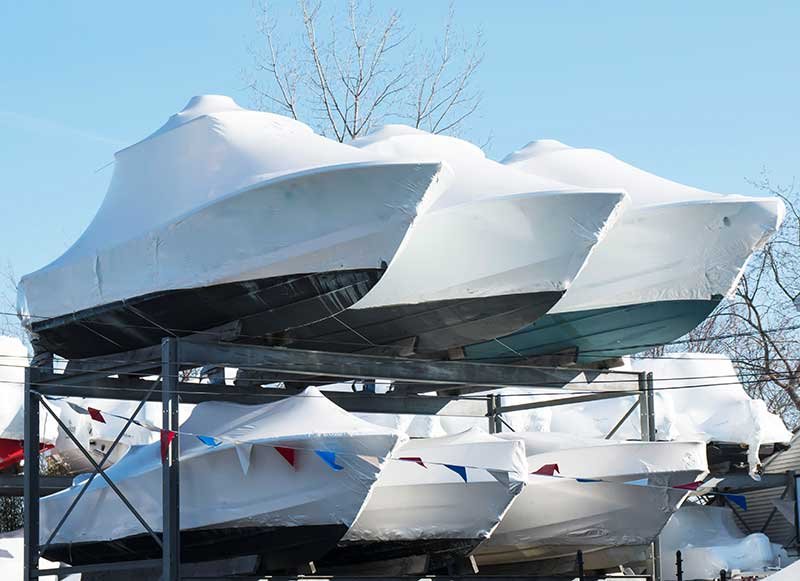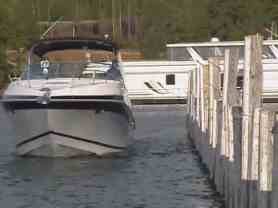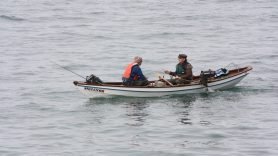

BoatUS has some tips learned from fuel industry insiders on how to store a boat with E-10 gasoline (containing 10% ethanol) over the winter. Nearly full tank or nearly empty tank? That is the big question facing boaters as they prep for the long hibernation. The concern is ethanol – an octane enhancing gasoline additive that has some unfortunate, harmful side effects on marine engines.
The Octane Issue
Some boaters choose to leave their boat’s gas tank mostly empty over the winter, and then refill in the spring in the hopes of “refreshing” the fuel to regain any octane loss. However, a nearly empty gas tank introduces a bigger problem: the strong possibility of phase separation with the E-10 gas. Incidentally, over long winter storage periods, E-10 gasoline loses octane at about the same rate as non-ethanol gasoline.
The Path to Phase Separation
Ethanol (an alcohol) can attract and absorb water – about 10 times more than regular gasoline – and still burn harmlessly through the engine. However, there comes a tipping point when the ethanol can no longer absorb the water, and the alcohol will separate out or “phase separate” from the gasoline. When this happens, the solution of water soaked ethanol will settle to the bottom of the tank, which is where the engine’s fuel system pick-up is located. Can you see where we are headed with this
More Water, Less Absorption
The problem with leaving a tank mostly empty is that it increases the tank’s “lung capacity” to breath in moist air (water) through the tank’s vent. If the tank is mostly empty over the winter, there will also be less E-10 gas in the tank to absorb the moisture. This combination of more water and less capacity for absorption greatly increases the chances of phase separation. Adding fresh gasoline in the spring would not remedy the problem – the phase-separated ethanol remains separated at the bottom of the tank.
The Water Separator Issue
E-10 can hold up to 1/2 percent of water by volume and up to that concentration the water molecules will dissolve in the gasoline forming a soluble mixture that will pass through a water separator and burn harmlessly in your engine. The only time water will collect in a tank and not be absorbed is if phase separation has occurred, and by then it will be too late. A water separator is not a solution to the phase separation problem.
The Fuel Additive Issue
Fuel additives are good for many reasons and should be used when laying up a boat for winter, but no additive will stand up to a good-sized slug of water. And once too much water has entered the tank and the gas has begun to phase separate, no additive will return the fuel to its original state. The only solution to phase-separated gas is to have a professional drain the tank and start anew.
The best advice for storing E-10 in your boat’s gas tank over winter:
Keep the tank nearly full. This greatly reduces the volume of moist air that can enter the tank via the fuel tank vent when temperatures fluctuate in the fall and spring. With any fuel, an antioxidant (found in many additives) will help keep it fresh during lay-up. Finally, never plug up a fuel tank vent – it creates pressure that could cause dangerous leaks in the fuel system.
BoatUS also has a free, downloadable winterizing checklist.









